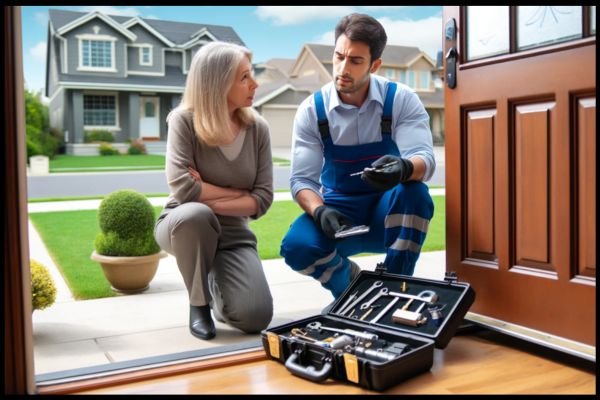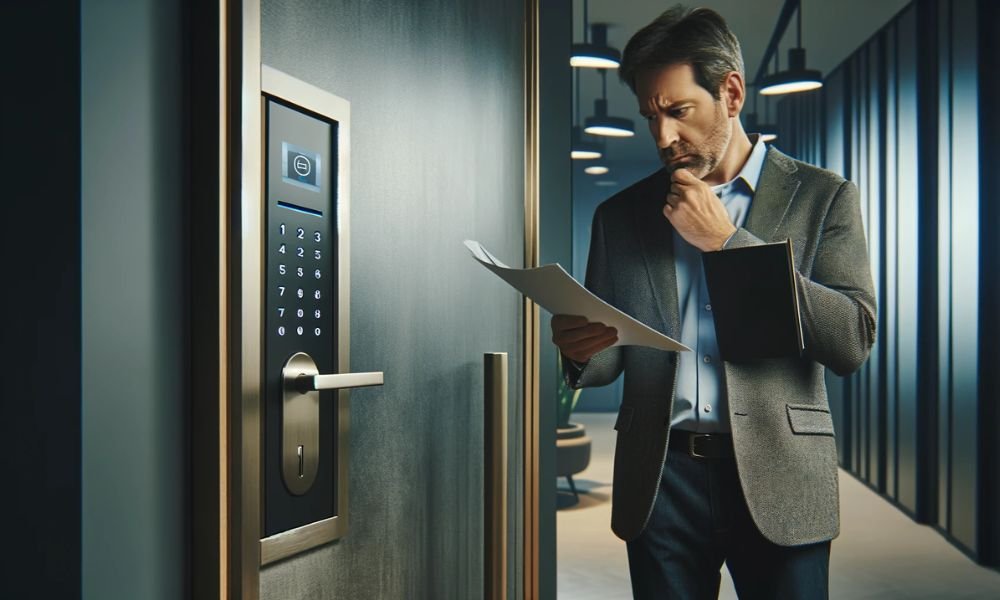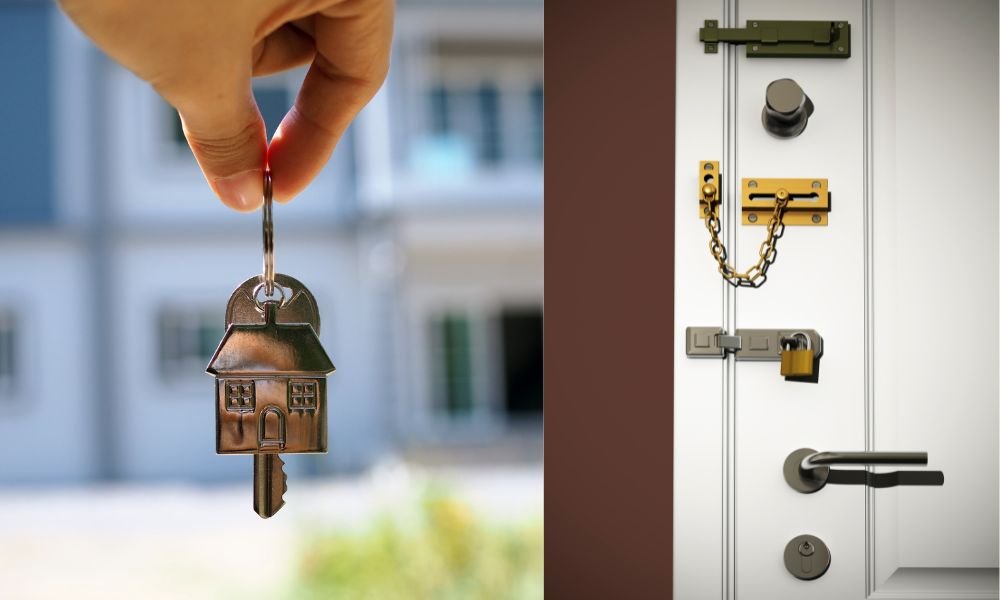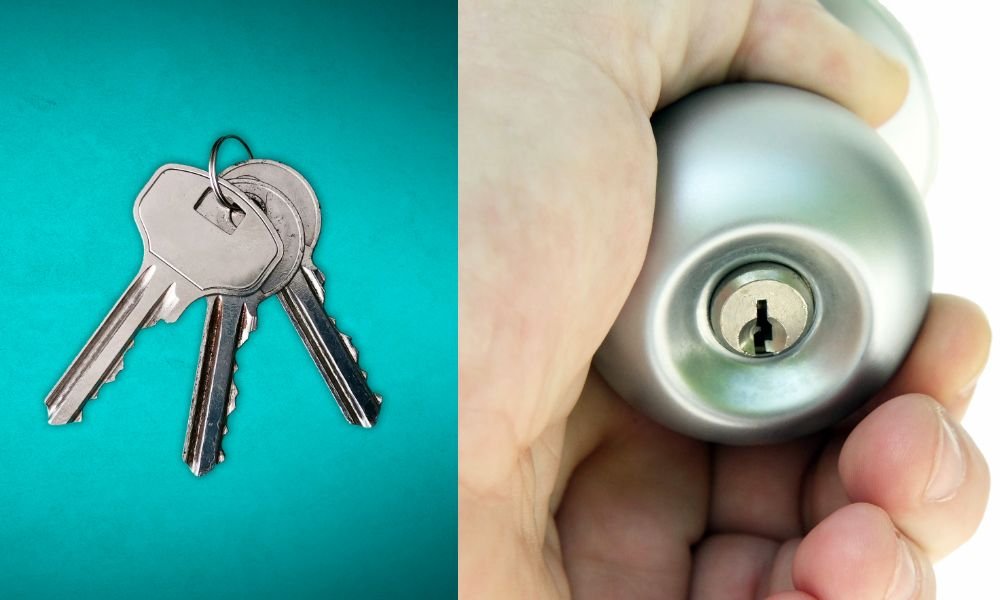Keypad door locks offer a convenient and secure way to control access to homes, offices, and other properties. They eliminate the need for physical keys, reducing the risk of lockouts due to lost keys. However, forgetting the code or facing a malfunctioning keypad can lead to frustrating situations. If you ever find yourself locked out, understanding how to open a keypad door without the code can be incredibly useful. In this comprehensive guide, we will explore various methods to bypass a keypad lock, and explain How to Open a Keypad Door Lock Without the Code.
Understanding Keypad Door Locks
Before attempting to bypass a keypad door lock, it’s essential to understand how these locks operate. Keypad locks are available in two primary types: mechanical and electronic. Mechanical keypad locks use a series of physical buttons, while electronic keypad locks rely on a digital interface and often come with additional features such as remote access and integration with smart home systems.
Components of Keypad Door Locks
- Keypad: The interface where the user inputs the access code.
- Locking Mechanism: The internal mechanism that locks and unlocks the door based on the correct code entry.
- Power Source: Typically batteries for electronic locks, while mechanical locks do not require a power source.
- Reset Button: A feature available in many electronic locks that allows for resetting the code.
Understanding these components can help you determine the best method to unlock the door without the code.
Legal and Ethical Considerations

Before proceeding, it’s crucial to highlight the importance of legality and ethics. Bypassing this without proper authorization is illegal and unethical. This guide is intended for situations where you have legal access rights, such as being the property owner or having explicit permission from the owner. Always ensure you are complying with local laws and regulations.
Methods to Open a Keypad Door Lock Without the Code
First Reset
One of the simplest methods to regain access is by resetting the lock. Many electronic keypad locks have a reset button that allows you to reset the code. Here’s how you can typically do it:
- Locate the Reset Button: This button is usually inside the lock mechanism, which might require you to remove the cover. Refer to the user manual for specific instructions related to your lock model.
- Press and Hold the Reset Button: Hold the button for a few seconds until an indicator light appears or you hear a beep.
- Enter a New Code: Follow the manufacturer’s instructions to set a new code. This often involves entering a factory default code first, followed by your new code.
Resetting this is an effective method if you have access to the reset button and the necessary instructions.
Using a Default Code
Manufacturers often set a default code for their keypad locks. If the lock has never been reprogrammed, you might be able to use this default code to unlock it. Check the user manual or the manufacturer’s website for the default code. Common default codes include simple sequences like “0000” or “1234.”
Bypassing the Lock Mechanism
For mechanical keypad locks, you might be able to bypass it’s mechanism itself. This method can be more challenging and may require specific tools:
- Identify the Model: Knowing the model can help you find specific techniques for bypassing it. Online forums and lockpicking communities can be valuable resources.
- Using a Shim: A thin piece of metal or plastic, known as a shim, can be slid between the door frame and the lock to disengage the locking mechanism. This method requires precision and patience.
Calling a Professional Locksmith

If the above methods seem too daunting or if you are uncomfortable attempting them, calling a professional locksmith is a reliable and safe option. Locksmiths have the expertise and tools to open without causing any damage. Additionally, they can provide valuable advice on maintaining or upgrading secure system to prevent future issues.
Using a Lock Picking Kit
Those with experience or training in lock picking can use this kit to open the door. This method demands skill and a solid understanding of the internal mechanisms.
- Select the Appropriate Tools: Common tools include a tension wrench and lock picks.
- Insert the Tension Wrench: Apply slight pressure to the lock’s cylinder using the tension wrench.
- Manipulate the Pins: Manipulate the pins inside the lock until they are all set, allowing the cylinder to turn and unlock the door.
Lock picking should be approached with caution and respect for legality. It is advisable to seek proper training if you are interested in this method.
Drilling the Lock

As a last resort, you can drill to gain access. This method will destroy the lock, so it should only be used if you plan to replace it afterward:
- Select the Right Drill Bit: Use a drill bit appropriate for the lock’s material.
- Drill the Cylinder: Drill through the center of the cylinder until it breaks.
- Turn the Mechanism: Once this is destroyed, you can manually turn the locking mechanism to open the door.
Drilling should only be considered when you have the tools and skills to replace this afterward.
Preventing Future Lockouts
To avoid future lockouts, consider implementing these preventive measures:
- Regularly Update Your Code: Change your keypad code periodically to ensure security and reduce the risk of forgetting it.
- Keep a Backup Key: If you have a key override option, keep a backup key in a secure location.
- Use a Key Management System: A key management system can help you keep track of all keys and access codes.
- Maintenance: Regular maintenance, such as replacing batteries for electronic locks, can prevent malfunctions.
By taking these preventive steps, you can minimize the chances of being locked out in the future and ensure the continued security and convenience of your keypad door.
Conclusion
Opening a keypad door lock without the code requires a combination of knowledge, tools, and sometimes professional assistance. While the methods outlined in this guide can be effective, they should only be used in situations where you have legal access rights. Always prioritize safety, legality, and ethics when attempting to bypass any lock. For the most reliable solution, consider consulting a professional locksmith.
Finally, by understanding the various methods and taking preventive measures, you can minimize the chances of being locked out and ensure that your keypad door lock continues to serve its purpose efficiently. Keypad door locks offer a great balance of convenience and security, and with the right approach, you can handle any lockout situation effectively.



